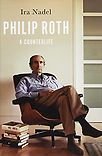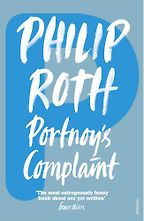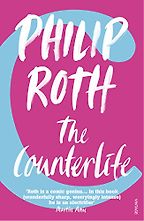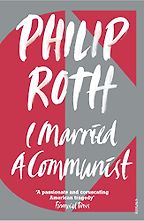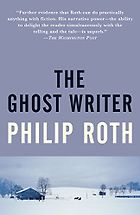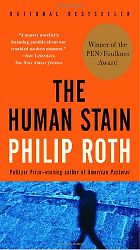Philip Roth’s books twice received the National Book Award, the first time when he was just twenty-seven, and the National Book Critics Circle award, and three times the PEN/Faulkner Award. He received a Pulitzer Prize and is credited with widening the American literary pantheon to include Jews. My first question is for the uninitiated: why is his work so renowned?
The one word answer is controversial. Even though he did not set out to become a controversial novelist, that is largely the way people have reacted to his whole career. The controversy begins with his first book, which is Goodbye, Columbus. It was a set of short stories, two or three of which raised eyebrows. There was a very strong reaction to “Defender of the Faith,” a short story about a set of Jewish soldiers and certain favors that one thought the other could provide. Then there was the controversy surrounding Goodbye, Columbus—a novella about a young relationship which is part of that collection—because it satirized the materialism of middle-class Jewish families. That was followed by the internationally controversial novel Portnoy’s Complaint, which was even banned in Australia for six months after it first appeared. And then, throughout the rest of his career, there were titles which didn’t sit comfortably with the public.
But it was precisely because Roth’s books were controversial that people felt they had to read them. A wonderful quotation I recently came across explains a good deal of how Roth positioned himself as a writer. In a 1983 letter to the Mexican author Carlos Fuentes, Roth wrote “nothing really interests me unless it’s going to make me uncomfortable afterwards. It’s just what makes it so uncomfortable and delicious to write.” So, you might say Roth is seeking out ways of destabilizing the relationship between the reader and the book. Throughout his life he succeeded in doing that, whether you’re talking about his rewriting of American history in The Plot Against America or the way he exposes the sexuality of relationships in The Dying Animal.
Aside from the titillation of cultural controversy, why pick up a Philip Roth book?
The main reason is he is such a good writer. He had one of the best ears among contemporary authors. He could capture character through dialogue in distinctive ways.
He was not a casual writer. Roth worked day and night to get it right. He worked hard to get right the way that the characters define themselves through their language. That’s why when you read a Roth novel, whether it’s The Human Stain or The Great American Novel, there is never a confusion of characters. Their voices are distinct and remain so throughout. In I Married a Communist, the brothers, Murray and Ira, are alike but would never be confused. Nor do you get his books confused. You would never confuse Alex Portnoy with Nathan Zuckerman, the protagonist of so many of his novels. That’s very, very important.
A critic called your Philip Roth: A Counterlife “immensely readable, a triumph of insight and scholarship” and “the book we’ve been waiting for.” To take on a subject so strongly associated with satirizing the project of biographers is a brave move. Why did you do it? And what was your approach?
I have long been interested in his style and in his subject matter. I found his writing tremendously stimulating and alive. Philip Roth has zest. He has energy and a drive, which is tremendously exciting. I’m from New Jersey. I was born in the same hospital as Philip Roth, years later. My mother is from his hometown, Newark. I visited often, so I had a feel for the ambience that is the setting for so many of his novels.
“Roth looked in the mirror. He often didn’t like what he saw there, but he wrote about it”
It struck me that a critical or literary biography of Roth might be valuable. I read and discovered all kinds of marvelous things in the archive at the Library of Congress. I also soon learned that another “official” biography was underway, but Blake Bailey and I did not work in tandem. Blake’s biography is about the man, whereas I focus on the literary life of Roth.
Both biographies came out in 2021. Immediately after releasing his authorized biography of Roth, Bailey was accused of sexual misconduct by multiple women and the book was withdrawn by the publisher. Did you feel as though this plot twist was part of a Philip Roth novel?
It was certainly shocking.
Something else important emerged at the same time as the biographies. Roth donated his book collection to the Newark Public Library, which opened the Philip Roth Personal Library where anyone can go to read what he read while he was writing. So, you can read all the reference texts Roth relied on in writing I Married a Communist. Roth wrote in his books, so you can see his comments and annotations, which makes it particularly exciting. They also have marvelous displays of Roth’s working methods. If you’d like to know what kind of pen Roth used or the sort of chair he sat in, they’re there. It enables a deeper level of understanding of Roth as a man and a writer.
The five works of Roth you chose include many of his most celebrated and awarded works. I’d like to ask about them in chronological order, starting with Portnoy’s Complaint.
Portnoy’s Complaint reflects Roth’s engagement with psychotherapy during the mid-sixties and the breakup of his first marriage. Roth discovered that he could use his struggle for self-understanding as the subject matter of a novel entwined with satire. It was a literary breakthrough. In the 1960s, a lot of novels dealt with psychoanalysis but what Roth linked it to was outrageous comedy.
Roth was also ready to knock down the door of gentility in American literature. Masturbation was not written about during the postwar period and yet, there it was on the page. Reviews said, ‘this is so outrageous, this is so obscene that you have to read it to believe it.’ And everybody wanted to read it. So, Portnoy’s Complaint was a breakout book. It made him a great literary success and financially secure but, at the same time, it was a burden. He became so famous that people would yell at him on the streets of New York. He couldn’t escape being the Philip Roth of Portnoy’s Complaint. He turned to less intimate, shorter work—like Our Gang, the satire of Nixon—before he regained his footing as a writer.
“Roth became the Rashomon of his own life, creating a set of intersecting subjective narratives,” you write in the biography.
Philip Roth put his private life on the page. He changed the names of some characters, and sometimes he didn’t. In The Plot Against America, the young boy telling the story is named Philip and the parents are called Herman and Bess, the name of Roth’s parents.
Roth looked in the mirror. He often didn’t like what he saw there, but he wrote about it. He confronted it; he didn’t disguise it and he didn’t hide from it. Throughout his life, he drew from who he was at different stages of his emotional, psychological, and sexual development. Once he wrote Portnoy’s Complaint, he wasn’t afraid of who he was.
He wasn’t afraid of naked truths, so he would write about American history and all its contradictions. He would write about political correctness in The Human Stain and a possible Nazi takeover of America and threats to American Jewish life in The Plot Against America. He took on what was uncomfortable.
And he often took it on in novels featuring the narrator Nathan Zuckerman. The first such novel was The Ghost Writer, which appeared in 1979. Tell us about this choice.
The Ghost Writer is a wonderful book for many reasons. It’s about big issues—about vocation, about literature and about the Holocaust. It’s sophisticated with overtones of Henry James, Chekhov, and Turgenev. It explores the nature of emotional relationships, here between the aging novelist E.I. Lonoff and his wife, Hope. It explores history through the character of Amy Bellette, who may, according to the narrator Zuckerman, be Anne Frank.
Portnoy’s Complaint, 1969, was over-the-top. But by The Ghost Writer, 1979, he was more restrained. Roth wrote 31 books, but The Ghost Writer is the one that is most carefully structured. Roth gets the mechanics of storytelling and the tone right. He had a great editor, Veronica Geng, who was at The New Yorker; she polished it with him.
The Ghost Writer was dedicated to Milan Kundera, a man whose work Philip Roth was instrumental in bringing to attention outside of Eastern Europe. Contrary to the cloistered life of a writer Roth depicts in The Ghost Writer, Roth seemed in close contact and conversation with his literary and intellectual contemporaries. How was he influenced by his epistolary ecosystem?
Roth broadened his perspective. His relationship with Claire Bloom, the English actress, led to him regularly spending six months of the year in London with her, where he met many new voices: Edna O’Brien, Primo Levi, Harold Pinter, Michael Herr, and the American painter R.B. Kitaj. Saul Bellow, whom he first encountered as a graduate student at the University of Chicago, was an early influence but in the seventies and after, it was Milan Kundera, Aharon Appelfeld, and others. He needed to get beyond Bellow and that’s what Europe helped him do.
Five Books interviews are expensive to produce. If you're enjoying this interview, please support us by donating a small amount.
He also developed important connections with a whole series of other writers in the European phase of his career. Whereas American writers only had to worry about time, money and materials, these writers—whether in Czechoslovakia, in Hungary or later, in Russia—wrote under dire circumstances. In his wonderful collection, Shop Talk, Roth interviewed a whole series of non-American writers. Learning about the lives of these writers took Roth far from Newark. It went beyond his Jersey style.
The Counterlife, published in 1986, is your third choice and the fourth book featuring Nathan Zuckerman. This multilayered work about scattered characters reinventing themselves midlife won the National Book Critics Circle Award. Tell me about the book and its importance.
The Counterlife provides several alternative perspectives. The novel’s conflicting points of view take you out of your comfort zone, to use the cliché. As I developed in my account of Roth, there is a counterlife to the public Phillip Roth, and it’s often driven by anger.
Roth wrote in The Counterlife, “[p]eople are unjust to anger, it can be enlivening and a lot of fun.” But Roth was not that happy and it’s very difficult to find a happy character in his work. Unhappiness is what compels his characters to act, to write, to love, to think and to change.
Philip Roth, your biography, is subtitled The Counterlife.
I subtitle my account The Counterlife because it goes beyond the glossy image of Roth presented in Vanity Fair and the happy home images in Architectural Digest. That’s only half his story. I wanted to tell the other part. Roth created a moat around himself, a self-protective wall. I wasn’t going to dismantle the wall, but I wanted to peek over it. This is where archives come in, interviewing people, and thinking about how and why he wrote in his special way.
In The Counterlife, in the eulogy Nathan Zuckerman wrote for himself, Roth’s alter ego says, “Calling it fiction was the biggest fiction of all!” The line between Roth’s fiction and his private life became more controversial after he published your next choice: when I Married a Communist came out in 1998, although the book is explicitly about betrayal during the anti-Communist hysteria in Cold War America. Many critics compellingly argued that it was a “novel of revenge,” targeted towards Roth’s ex-wife Claire Bloom. Please tell me what the book is about and what many critics thought it was about.
It’s Roth most melodramatic novel, written with flamboyance. I like I Married a Communist a great deal because of its energy. Every page has a revelation. It is a captivating book.
It’s a novel about politics. The main character in the novel is Ira Ringold. Ira’s brother Murray is a teacher, who’s based on an actual teacher named Robert Lowenstein that Roth had in high school, and what he went through when he was accused during the McCarthy era.
Get the weekly Five Books newsletter
In I Married a Communist, the characters confront constant challenges to their identity. There is the constant theme of impersonation. Ira begins his career imitating Abraham Lincoln. He gives great performances of the Gettysburg Address, which leads to a radio career which leads to his relationship with a woman who herself impersonates someone else. It’s also a novel about acting. Ringold’s love interest is a Jewish woman from Brooklyn, an actress known by the name Eve Frame, who is actually Chava Fromkin. It’s a novel about uncovering who people really are and showing that you cannot hide from who you really are. Impersonation never really succeeds.
And we have to say that I Married a Communist was one way Roth got back at Claire Bloom. She had recently published Leaving a Doll’s House, a one-sided account of her relationship with Roth, which infuriated him. So, he creates an actress prone to hysterics and deception. In his mind, she deserved it!
Starting in the 1970s, critics like Vivian Gornick pointed out the underside of the way Roth “unleashed libido” in his writing, his objectification of underdeveloped female characters. What about Roth’s reputation for misogyny? Can you make the critics’ case and tell me how you differ?
It is a tangled topic. People say that even though he represented women as sexual objects and misrepresented or mistreated women, he had mutual relationships with many women in his real life.
But critiques of Roth’s representation of women are largely correct. His treatment of women in his work is generally unsympathetic. It is focused on the physical and sexual. Naturally, people react strongly to it—not just in today’s climate, but even when these books were first published. It’s a question, I suppose, of how harmful it is and whether it is enough to undermine Roth’s strengths as a writer unafraid of addressing contemporary problems.
“One of his editors told me that he rarely earned back his advances”
There are many Roths. There is the misogynistic Roth and then there is the lyrical Roth. Roth isn’t thought of as a lyrical writer because few pay attention to his writing about nature. He loved nature and spent a lot of his life in the countryside: see the final page of The Human Stain, a marvelous piece of writing. This is another aspect of Roth. It’s hard to give up on a writer with this multiplicity.
1995’s Sabbath’s Theater is a very dark book with a very exploitative main character.
Sabbath’s Theater stands alongside Portnoy’s Complaint as one of Roth’s most controversial books. The protagonist, to be blunt, is a ‘son of a bitch.’ Yet Roth told David Remnick he felt the freest and happiest as an author when writing Sabbath’s Theater because he could let go again. He’s back in the world of Portnoy’s Complaint, but now with a sixty-something protagonist who is almost unlikeable.
Mickey Sabbath’s body is giving out. He’s unpleasant. He’s overweight. But he has an insatiable desire and appetite for physicality, even though death is catching up to him.
Yet, in Sabbath’s Theater, there’s a marvelous lyrical moment at the end. Sabbath is on the shore in Roth’s native New Jersey, wrapped in an American flag that was given to his mother when his brother died in World War II. That ending is equal to Fitzgerald’s end for The Great Gatsby. It’s a lyrical moment given to a revolting main character.
You observe that Roth often played at the project of Prince Hal, which Shakespeare encapsulated as to “so offend to make offence a skill.” What did you mean by that? What is the psychology behind a man who, in life and in letters, made offending a skill?
Attention. Offending is a way to avoid being ignored. He was determined to make others listen to what he had to say. And he found much to offend him almost every day.
How popular was Roth?
Measured by sales? His two bestsellers were Portnoy’s Complaint and The Plot Against America. Other books got a tremendous amount of press, but one of his editors told me that he rarely earned back his advances. I don’t think that was his goal. I think his goal was to write about issues and circumstances that upset him. The ideas of political correctness, for example.
The Human Stain, which emerged in 2000, treats the topic in a university setting.
This book emanated out of the era when Washington was embroiled in the Monica Lewinsky and Bill Clinton scandal. Roth was a great enemy of political correctness.
He was particularly upset about the changes underway in university life. He always oriented himself around universities. He taught at a long list of universities, including Iowa, the University of Pennsylvania, Princeton, and Hunter. He’s buried at Bard. He loved the university but hated any restrictions on its freedoms.
Five Books interviews are expensive to produce. If you're enjoying this interview, please support us by donating a small amount.
The Human Stain is based on actual experience. A close friend of Roth’s, who was a very distinguished professor of sociology at Princeton, said something that resulted in his ruination. To see ‘cancel culture’—to use today’s phrase—inhibit university life and limit the expression of ideas that we may not want to hear was, to Roth, an anathema.
Last question: When The Plot Against America was published in 2004, a New York Times critic called Roth’s depiction of America’s political landscape “cartoony.” But by 2018 the Times called the book “eerily prescient.” What is The Plot Against America about and how does it look from your perspective?
The Plot Against America is about how easily American history can be rewritten. It’s a vivid book. The characters are very bold, but they are based on actual historical figures. It’s about what would’ve happened if someone sympathetic to Hitler had been elected president.
It’s part of what I once called, in an essay, “The American Roth.” Roth has, almost from the beginning, written about American values. Another way of looking at Goodbye Columbus is as an account of American values. The Plot Against America shows American values very susceptible to corruption. It’s about how democracy and freedom are always threatened.
Roth’s treatment of history could be a topic for another hour. We talked about language and Roth, psychology and Roth, women and Roth and the lyrical Roth. There are multiple Roths. That is why Roth is a writer that we will continue to read and talk about continuously.
Five Books aims to keep its book recommendations and interviews up to date. If you are the interviewee and would like to update your choice of books (or even just what you say about them) please email us at [email protected]

